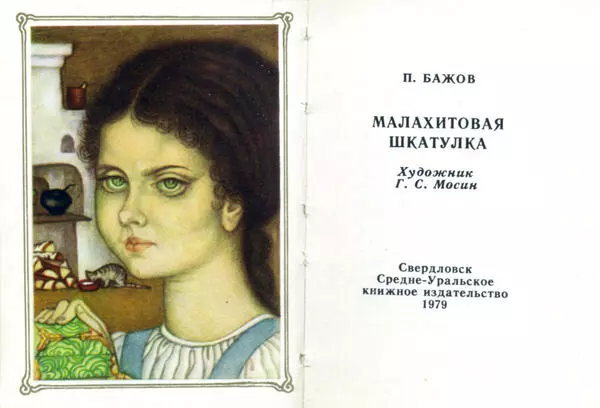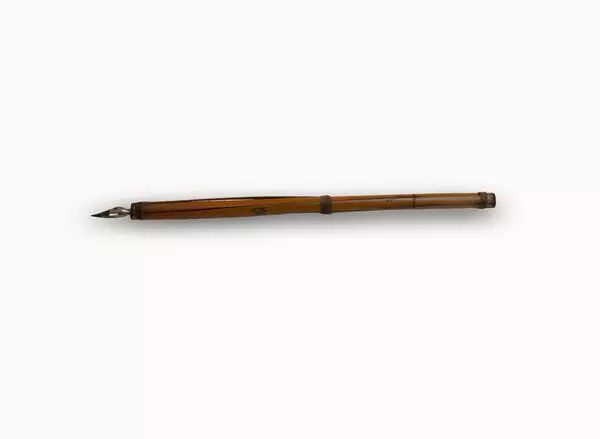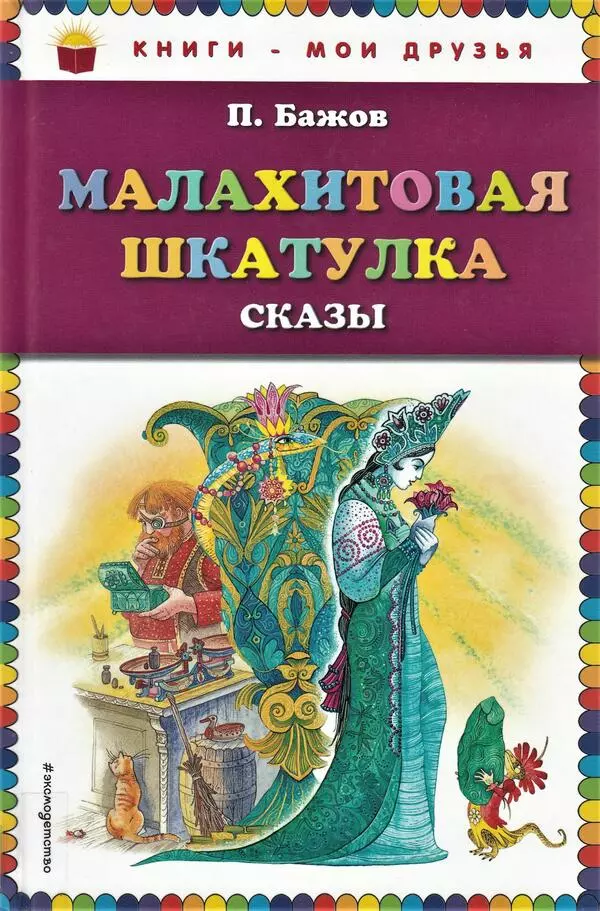“The Ural True Tales (From the Modern Ural Factory Lore)” is the first book by Pavel Petrovich Bazhov, which was published in 1924 by the “Uralkniga” (Ural Book). Bazhov then worked as the head of the letters department in the editorial office of the “Peasant Newspaper”, and he was asked to write “something about the Urals”. Bazhov later believed that it was this work that marked the beginning of his great creative path, which culminated in his tales:
The Ural True Tales
Время создания
1924
Место создания
Yekaterinburg, the USSR
Размер
21,5x15,5 cm
Техника
paper, typographic printing
Коллекция
Выставка
#2
#3
I wrote the book ‘Ural True Tales’, and that was all new to me. It seemed surprisingly easy. I didn’t think about the style. I had a pile of expressions to use. I wrote as we speak. It is easy when you write in your mother’s and father’s language about what you have seen yourself. The picture paints itself. I did not need to keep notes with dates. I only needed to bring the concepts closer, to compare them. This book enticed me, and that is where it all started.
Pavel Bazhov
#4
The book was a collection of historical sketches about the way of life and pre-revolutionary past of one of the oldest mountain districts in the Urals — the Sysert district. As Bazhov was in many ways an eyewitness to the events described in the stories, the sketches turned out vibrant and autobiographical. Bazhov wrote about himself, his childhood, and his parents as part of the general history and life of all factory workers.
Pavel Petrovich described in detail the factory owners Maria Antonovna Turchaninova and Dmitry Pavlovich Solomirsky and called them by the same nicknames that he later used in his tales: “Turchaninikha” and “Bug-eyed”. These were the nicknames given to the “nobles” by factory workers.
In the “Ural True Tales”, as in his future works, Bazhov focused on the man of labor — a peasant, a craftsman, a factory worker and someone who worked “in the mountains”, in quarries. Bazhov also gave a detailed account of the production process in the “fire” room — the workshop with a furnace, and wrote about the life and leisure activities of workers and their families, their relations with the church.
A key characteristic feature of all Bazhov’s works, starting with the “true tales”, was the author’s use of everyday dialogue, his love for a witty folk expression. Bazhov skillfully conveyed women’s squabbles and cheerful conversations of workers, vividly recreated the arguments of ordinary people, and described how they settled issues.
With particular pleasure, he wrote down the nicknames of specific people that he knew. “Sparrow”, “Kuzkin’s Brat”, “Drill”, “Cup” are the heroes of his stories. “Masterko” (master-craftsman), “zhom” (those who receive raw materials at factories), “prisudari” (clerks), “shosha” (junior supervisors at factories) are the dialect words for professions and occupations that are mentioned in Bazhov’s works.
In general, the writer, in the spirit of that time, sought to present, from his point of view and from the point of view of the people, a reliable history of the development and decline of a large factory region, with all the pros and cons, characteristic features and attributes.
Pavel Petrovich described in detail the factory owners Maria Antonovna Turchaninova and Dmitry Pavlovich Solomirsky and called them by the same nicknames that he later used in his tales: “Turchaninikha” and “Bug-eyed”. These were the nicknames given to the “nobles” by factory workers.
In the “Ural True Tales”, as in his future works, Bazhov focused on the man of labor — a peasant, a craftsman, a factory worker and someone who worked “in the mountains”, in quarries. Bazhov also gave a detailed account of the production process in the “fire” room — the workshop with a furnace, and wrote about the life and leisure activities of workers and their families, their relations with the church.
A key characteristic feature of all Bazhov’s works, starting with the “true tales”, was the author’s use of everyday dialogue, his love for a witty folk expression. Bazhov skillfully conveyed women’s squabbles and cheerful conversations of workers, vividly recreated the arguments of ordinary people, and described how they settled issues.
With particular pleasure, he wrote down the nicknames of specific people that he knew. “Sparrow”, “Kuzkin’s Brat”, “Drill”, “Cup” are the heroes of his stories. “Masterko” (master-craftsman), “zhom” (those who receive raw materials at factories), “prisudari” (clerks), “shosha” (junior supervisors at factories) are the dialect words for professions and occupations that are mentioned in Bazhov’s works.
In general, the writer, in the spirit of that time, sought to present, from his point of view and from the point of view of the people, a reliable history of the development and decline of a large factory region, with all the pros and cons, characteristic features and attributes.
#9
Ministry of Culture of the Russian Federation
читать дальшескрыть
00:00
00:00
1x
The Ural True Tales
Время создания
1924
Место создания
Yekaterinburg, the USSR
Размер
21,5x15,5 cm
Техника
paper, typographic printing
Коллекция
Выставка
Открыть в приложении
Поделиться









